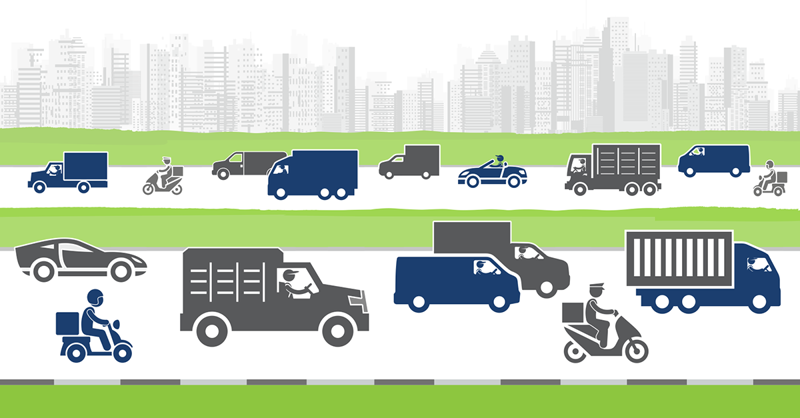*Update* While these six reasons logistics managers are losing sleep, the past year has added more. COVID-19 has changed the way people shop and the way shippers ship.
However, as we slowly emerge from the crisis, there are some new worries –both long- and short-term for logistics managers, 3PLs, and other shippers, so we’ve added a couple to the list below as well as ways to overcome those challenges and get some ZZZZZs.
There are plenty of things to manage when it comes to shipping, however, the shifting landscape is making it even tougher on many logistics managers. From omnichannel, multi-channel strategies to going global, logistics managers are facing new and complex challenges.
Here are 6 things logistics managers are losing sleep over in today’s parcel shipping environment.
- More carrier services from more locations: Rate shopping now includes more complex business rules. Working with a single carrier was fairly easy. However, a multi-carrier strategy is a norm and that includes national, regional, and local carriers around the world. Add to that emerging carrier marketplaces, and you have a new reason to lose sleep over your shipping.
- Carrier capacity crunch: Most warehouse management systems and order management systems don’t take transportation costs into account when they are putting together a picklist or packing instructions. They consider labor, steps to where the items are in inventory, but skip this important cost. This is surprising, given that transportation costs are a significant part of the cost of goods sold and it’s growing at nearly twice the rate of inflation.
- Carrier mode silos and fragmented views of costs: Logistics managers have only a very fragmented and superficial view of their parcel expenditures. Shipping data has historically been locked up in a disparate array of silos, like carrier-provided systems and websites that each store data in a variety of different formats. Office and inbound shipping costs aren't tracked at all, except in the form of weekly carrier invoices that are very difficult to reconcile. The result is that they are unable to measure what they are responsible for managing. They are unable to get at the insight opportunities that might exist for cost savings that could mitigate the impact of “free shipping.”
- Dimensional, space-based rating: Order entry, purchasing, and shopping carts need to know how many cartons or pallets an order will require in order to estimate parcel shipping costs accurately. Right now, most estimates are based on guesswork. Guess too high, goodbye customers. Guess too low, goodbye margins. Pack poorly, and incur waste plus unexpected dimensional (DIM) weight fees.
- Optimizing brand value and meeting the delivery promise: Consumers expect more for less. They want fast, free delivery with the same customer service they experienced when they purchased the item. As shippers’ carrier networks and services expand, what carriers do in the field directly reflects on you.
- The returns disconnect: In one study reported in Retail Dive, 57 percent of consumers say returns are a hassle or could be easier. Meanwhile, 57 percent of retailers surveyed said returning products is "very easy." This disconnect between customers and retailers can be exacerbated when return shipping is slow, difficult, and costly for either party.
Here are two more challenges facing retailers, manufacturers, 3PLs, and other shippers as we emerge from the COVID-19 pandemic:
-
Rising Fuel Costs—After bottom-of-the-barrel pricing during the pandemic, fuel costs are beginning to rise again as more Americans take to the roads. Currently, Diesel costs are averaging $3.095 across the United States [3/32/21], and national, regional, and local carriers feel that take a bite out of profits, and so are shippers. At the current prices, carrier surcharges as high as 8% can also take a bite out of many shippers’ bottom lines. To help offset some of those costs, shippers need to take a multi-carrier, omnichannel approach to shipping to reduce the distance to the end customer and use technology to find the most cost-effective rate and service.
-
The D2C Shift— All members of the supply chain, including manufacturers, distributors, 3PLs, and retailers, have started [or advanced] the race to Direct-to-Consumer (D2C) omnichannel fulfillment as price-conscious consumers look for products online at the best prices and the cheapest shipping. Systems now need to gear up to accommodate smaller, more frequent D2C shipments and their legacy systems are not always up to the task. Moving to an omnichannel multi-carrier parcel management solution allows shippers to ramp up their D2C logistics quickly.
Those are a lot of issues and possibly a lot of sleepless nights. Join Bob Malley, Former Managing Director of Pierbridge, Lance Healy, co-founder of Banyan Technology, and Tim Leary, Director of Operations, ConnectShip, for this on-demand Supply Chain Brain-hosted webinar “Overcoming the Barriers to an Effective Omnichannel Shipping Strategy,” as they explore these issues and more, along with ways to manage them.
Get your copy here.
